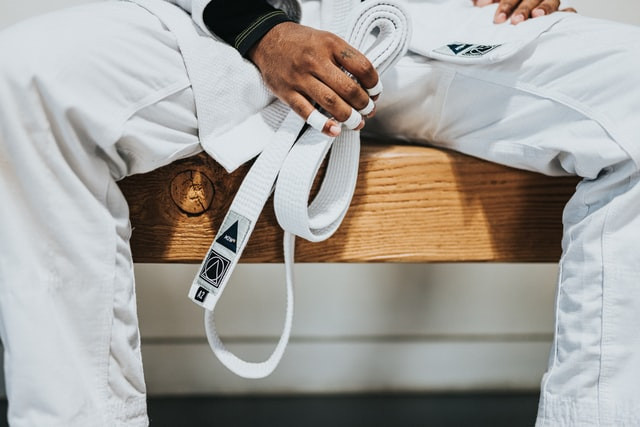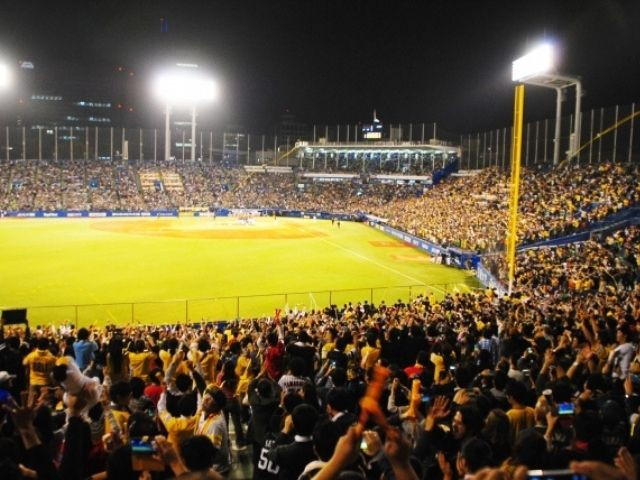Judo is one of the few martial arts among many as well as one of two Japanese martial arts that made its way into the Olympics as an official medal event. Learn more about judo, famous Japanese judo practitioners, and how you can study it for yourself in Japan.
Table of Contents
Judo: The Basics of the Sport
The term Judo, which means "the gentle way," is a combat sport and martial art that originated in Japan in 1882 and was created by Kano Jigoro. Judo was created by building on various methods from jiu jitsu, with the focus of turning the opponent’s force against them and pinning them down cleanly and efficiently by applying force to the correct spots. Thus, it takes much practice and training to be able to do so.
※ Encyclopædia Britannica, Inc., "Judo"
Judo is described as "gentle martial arts" because the movements are concentrated on defending oneself instead of attacking the opponent. In Judo, when throwing their opponents, they help them land safely by balancing and grabbing the opponents' uniforms. Judo's uniqueness lies with the fact that even a weak individual can fight off stronger ones with a minimum amount of effort and maximum effect - but of course it takes much training and practice to be able to do so. The self-discipline, compassion, and caring about the attacker's well-being was the one that makes Judo unique.
A Judoka (a judo student) wears a traditional uniform called judogi during sparring or competitions. It includes a thick upper jacket based on kimono (a traditional garment in Japan), thin canvas pants, and a cotton belt with different colors indicating the user's rank. The Judoka practices barefooted inside the judo dojo (training facility).
Judo As An Olympic Event
Kano modified techniques so that they were safe enough and created rules that were made for the athletes to compete and practice safely without injuries. With the help of the students of Kano, Judo became well-known, and finally, in 1964, it was officially considered as an Olympic Event and the First Martial Arts event in the Olympics.
※ Judo Information Site, "Judo History"
Writer's Pick
Famous Japanese Judo Athletes

The rise of Judo athletes in Japan and throughout the world was highlighted through the Olympics . Here are just some famous judokas of Japan during the Olympics:
Nomura Tadahiro is an all-time champion winning three Olympic Gold Medals in the lightweight division (-60) consecutively - the first man to do so. He won his first Olympic Gold Medal at the age of 21 in 1996. In 1998 a severe injury in the knee kept him from participating in competitions but recovery and perseverance led him to bring home the 2000 Summer Olympic Gold Medal that was held in Sydney. He won the match with uchi-mata (a judo technique) within 14 seconds. He also won Gold in 2004 in Athens, bringing his grand total to 3.
※ Olympic Games, "Tadahiro Nomura"
Next is Saito Hitoshi who won two Olympic gold medals in the Heavyweight Division. He won his first Olympic Gold Medal in the Heavyweight division in Los Angeles. In the 1988 Summer Olympics, he defended his title and won his second Olympics Gold medal. After his career, he chose to become a University Instructor and coached both the Olympic team and the Japan National Judo team. Unfortunately, he died at the age of 54 because of cholangiocarcinoma.
※ Olympics, "Hitoshi Saito"
The very first woman who won 2 consecutive Olympic Gold Medals in Judo was Tani Ryoko. She won her first victory in the Fukuoka Women’s Judo Tournament in 1988. She won many matches throughout her career, but her Olympic gold medals came from her wins in Sydney (2000) and Athens (2004). She retired from judo in 2010.
※ Encyclopædia Britannica, Inc., "Tani Ryōko"
Other Judo Olympic medalists representing Japan include Shinji Hosokawa, who won a gold medal in the 1984 Summer Olympics under the extra weight division and a bronze medal in the 1988 Olympics, Yoshiyuki Matsuoka, a gold medalist in the year 1984 in the half-weight division, Mashu Baker, a male Judoka under middleweight division, won a gold medal in the 2016 Olympics in Rio and many more.
Japanese judoka to look out for include the Abe siblings - Abe Uta and Abe Hirofumi - Ohno Shohei, Arai Chizuru, and many others. Check out the International Judo Federation’s results page for Japan to see some of the best judoka and their placements in recent events in international judo competitions.
※ International Judo Federation, "Japan"
Learn Judo In Japan

Learning Judo is difficult on your own and you can't avoid injuring yourself, especially if you don't perform the techniques correctly. Thus, in order to learn judo, you need to have a proper instructor to teach you the proper posture and techniques as well as a sparring partner to practice with.
One easy way to do so is to look for a school or training center. Some basic expectations upon joining a judo school include having good manners and respect, not only for the sport and the instructors but also your opponents. This also correlates into keeping your judogi (your uniform) clean and in good condition, and to keep your nails short so as to not injure your opponents.
There are many schools in Japan, as would be expected. Here are some that are open to international students and beginners. Note that English instruction is not a guarantee.
Kodokan Judo School
Kano Jigoro, mentioned above as the creator of Judo, also created his own school of Judo known as Kodakan, which means "a place to teach the path" in May 1882 at Eishoji Temple in Shitaya, Tokyo. He moved Kodokan Judo into a larger area as the school grew, eventually for it to end up in its current location in Bunkyo Ward next to Tokyo Dome. The dojo is located in a building which also houses the Kano Memorial Hall as well as accomodation for those training to be judoka.
※ Kodokan Judo Institute, "History of Kodokan Judo"
If you are a beginner from overseas and want to study Judo in Kodokan, you need to fill out a form at the International Department's main building. The membership fee costs 8000 yen, as well as a monthly training fee of 5000 yen. To get the full experience, you are highly advised to train for an entire year.
If you are already experienced in Judo and don’t need instruction but would rather simply practice, you can join Randori (sparring) in the main Dojo in Kodokan instead, with either a monthly fee (in addition to membership) or a daily fee. This is also an option for experienced judoka who are only able to stay a short period of time. Please note that you must have a black belt to join Randori, and you can only wear white judogi at Kodokan.
※ Kodokan Judo Institute, "Enrollment" ※ Kodokan Judo Institute, "Practice for a short period"
Kodokan School
Kodokan Osaka International Judo Center is the sister school of Kodokan Judo School in Tokyo and is located in Osaka. The Main Dojo is located on the 7th floor of the building, which consists of 420 tatami mats. This is used for training and official matches.
All students gather in this Dojo room to train during weekdays and the weekend for the official judo events and matches. Each class was assigned to train for an hour or an hour and a half. They have three class divisions - children ages 6 to 12, students are ages 11-15, and an adult division for anyone over 13 years old.
The training fees can be paid weekly or monthly. They also offer lifetime membership and one-day training fees.
※ Kodokan Judo Institute, "Access, Contact Information"
Embassy Judo Club
The Embassy Judo Club was formed in 1957 in Tokyo, Japan, by Sato Shizuya. They have instructors from the US who were trained to become professional Judoka. It is easier for international students to understand the lessons because they can speak English. This club aims to let the international students enjoy and learn about the culture and tradition of Japan while learning self-defense and staying physically fit. They teach both Judo and Nihon Jujutsu, a combination of Judo and Aikibujutsu. They have Junior (6 to 12 years old), Adult Class (over 13 years old), and a specialized class for Nihon Jujutsu (over 13 years old). For both Junior and Adult Class, they held classes for an hour every Wednesday and Saturday and every Saturday for Nihon Jujutsu.
※Embassy Judo Club
Other schools that are open to beginners include Nagasaki Mitsubishi Judo Club, Daishin Judo Club in Osaka, Asahi Dojo in Yokohama, and so on.
Visa
The above suggestions are for people who already have visas to be in Japan. Many international students and people working in Japan take interest in judo and end up taking classes and spending time sparring at the dojo.
However, if you are neither of those two categories of people, you could look into the Cultural Activities Visa, which grants you the ability to study something of Japanese culture from 3 months up to 3 years. However, you aren’t paid and cannot work (unless you apply for part-time work permission) during this time, so you would have to be able to support yourself.
※Ministry of Foreign Affairs of Japan, “General visa: Cultural activities”
To Sum It Up!

People all have their own goals and starting points as to why they become interested in and want to learn Judo. It is hard to learn new things, but remember that you can’t be successful in mastering something if you don’t experience hardships in any way. Judo is the same. Be confident and strive hard to learn because there are friendly, patient and skilled instructors in the judo schools in Japan who will guide you and help you - and many people say judo helps them understand and appreciate themselves, others and Japan at an even deeper level. As they say, you will never know until you try!



































